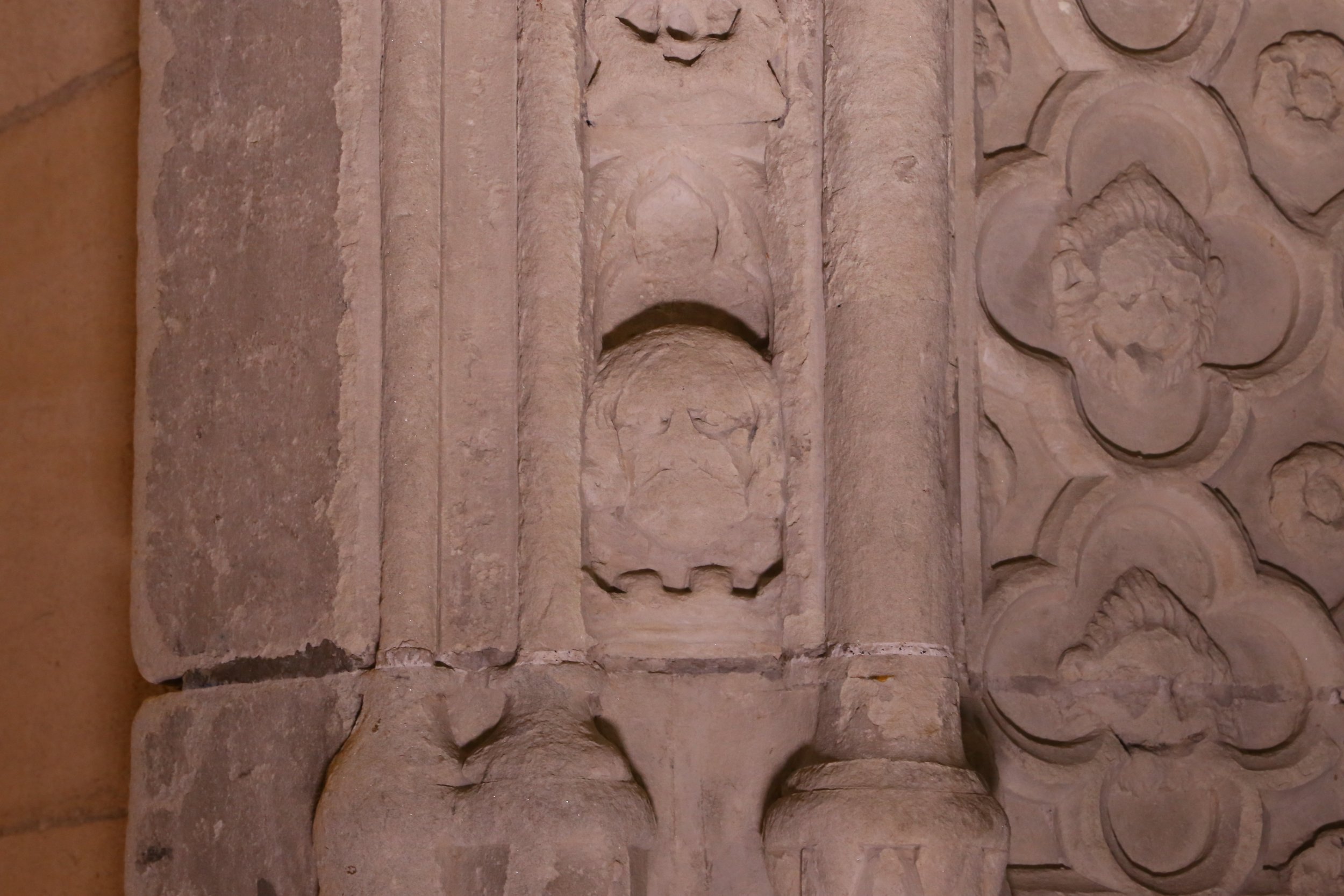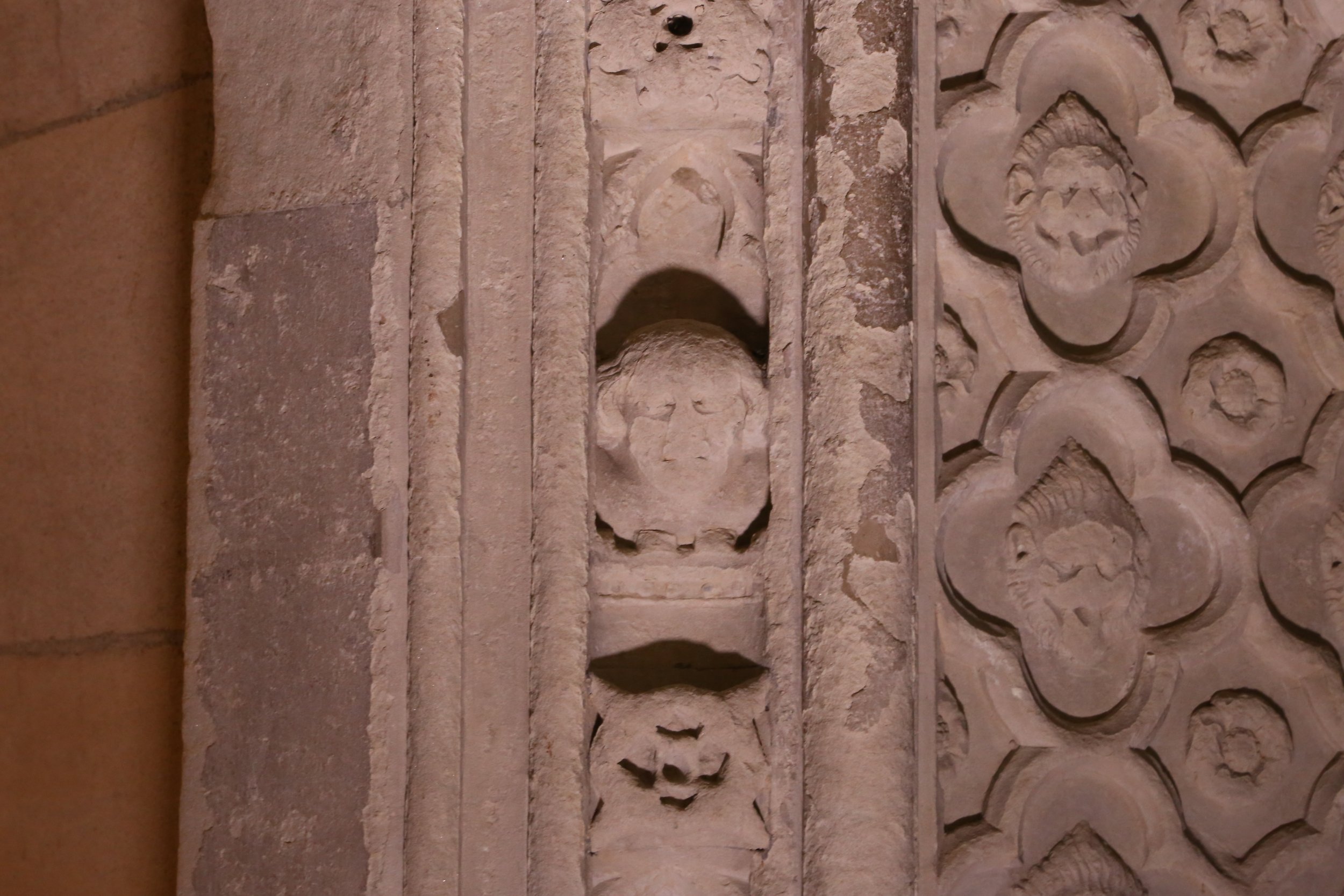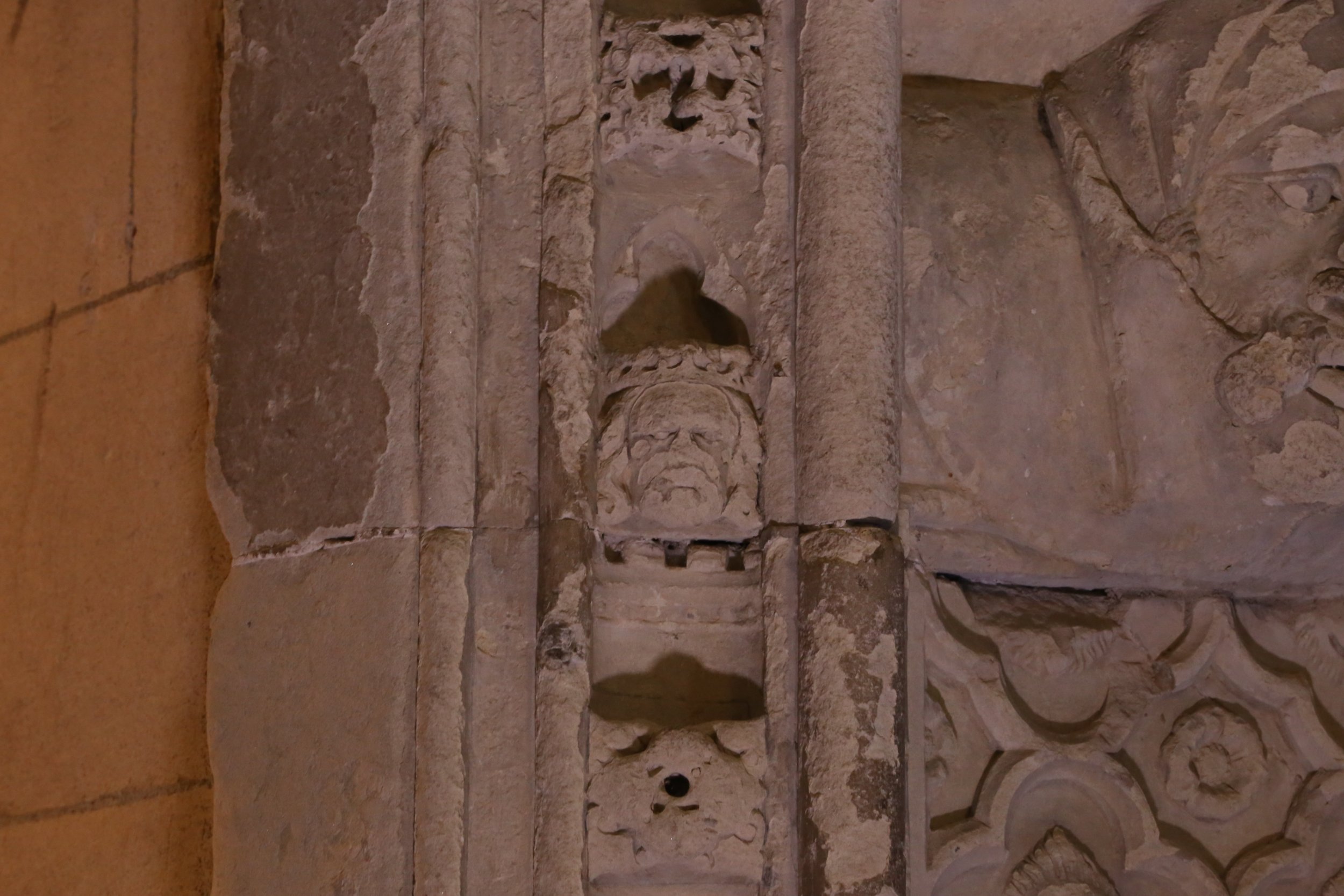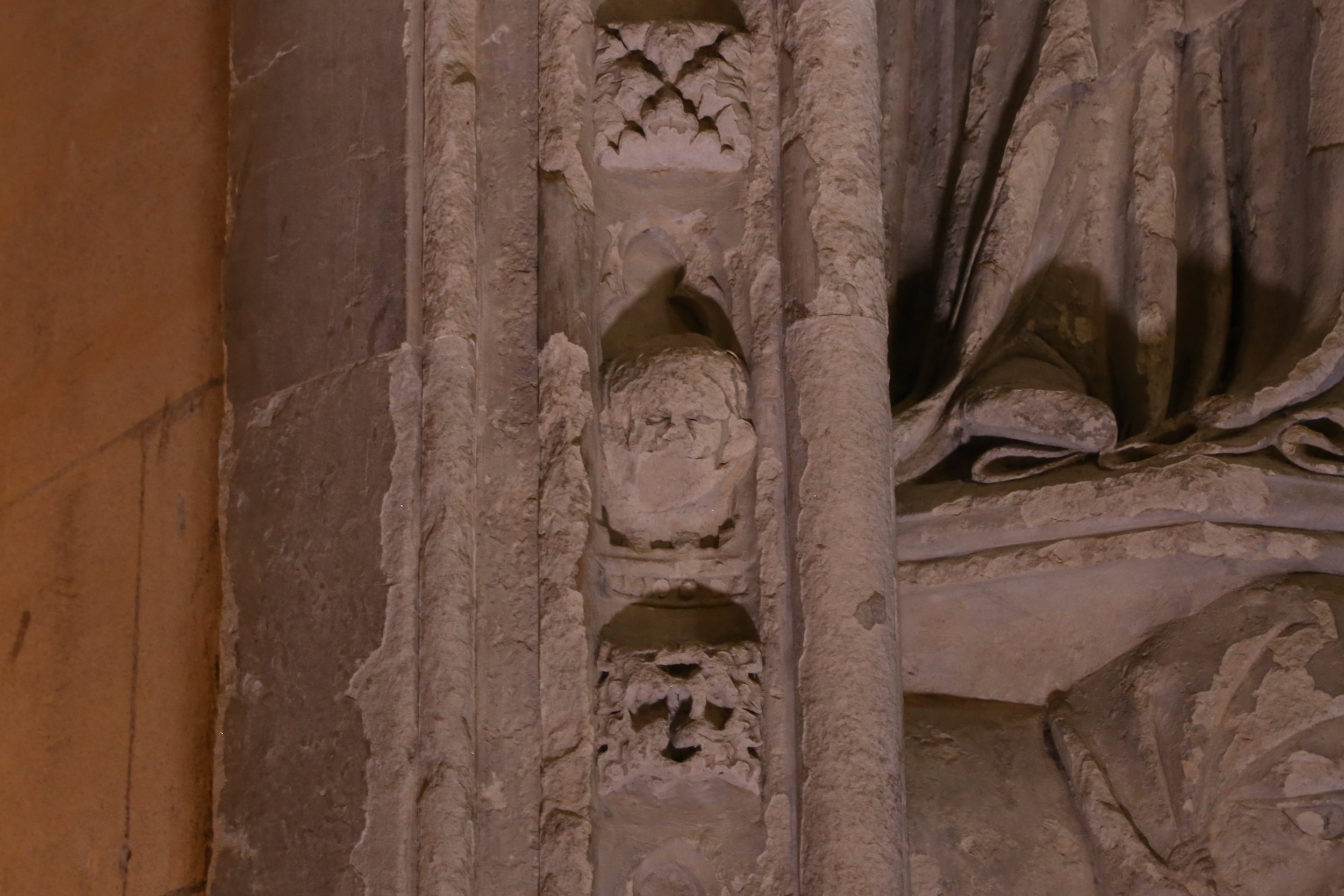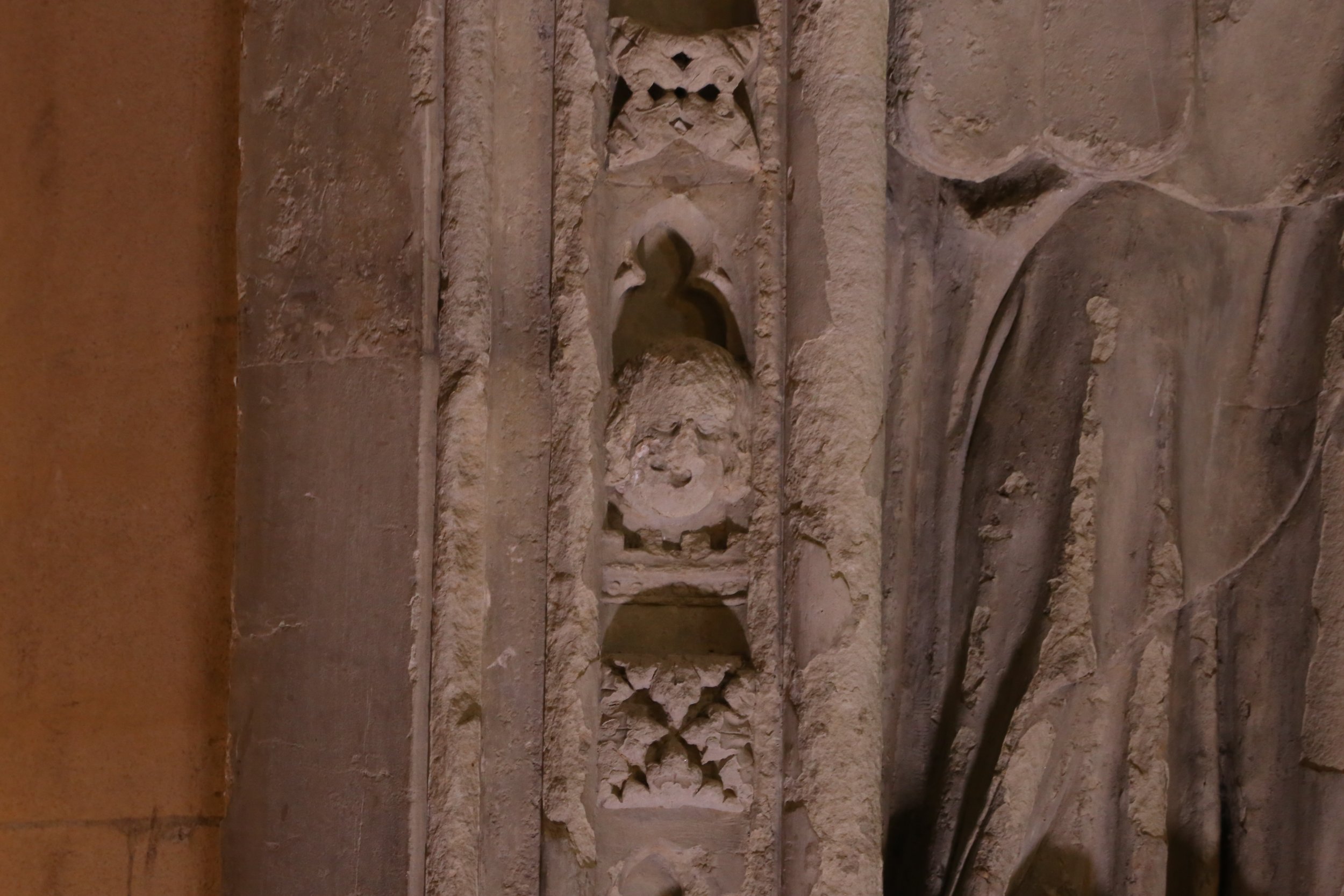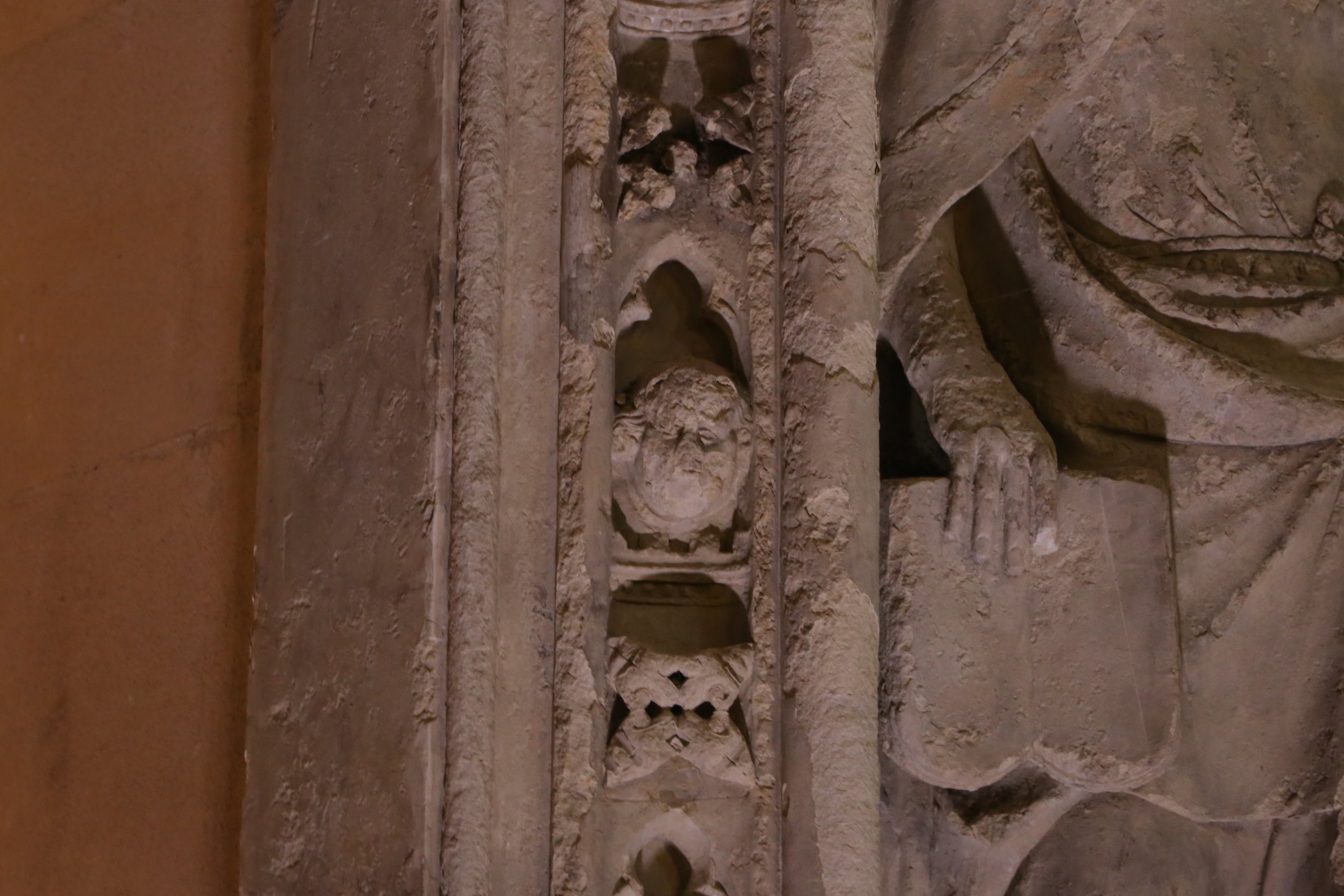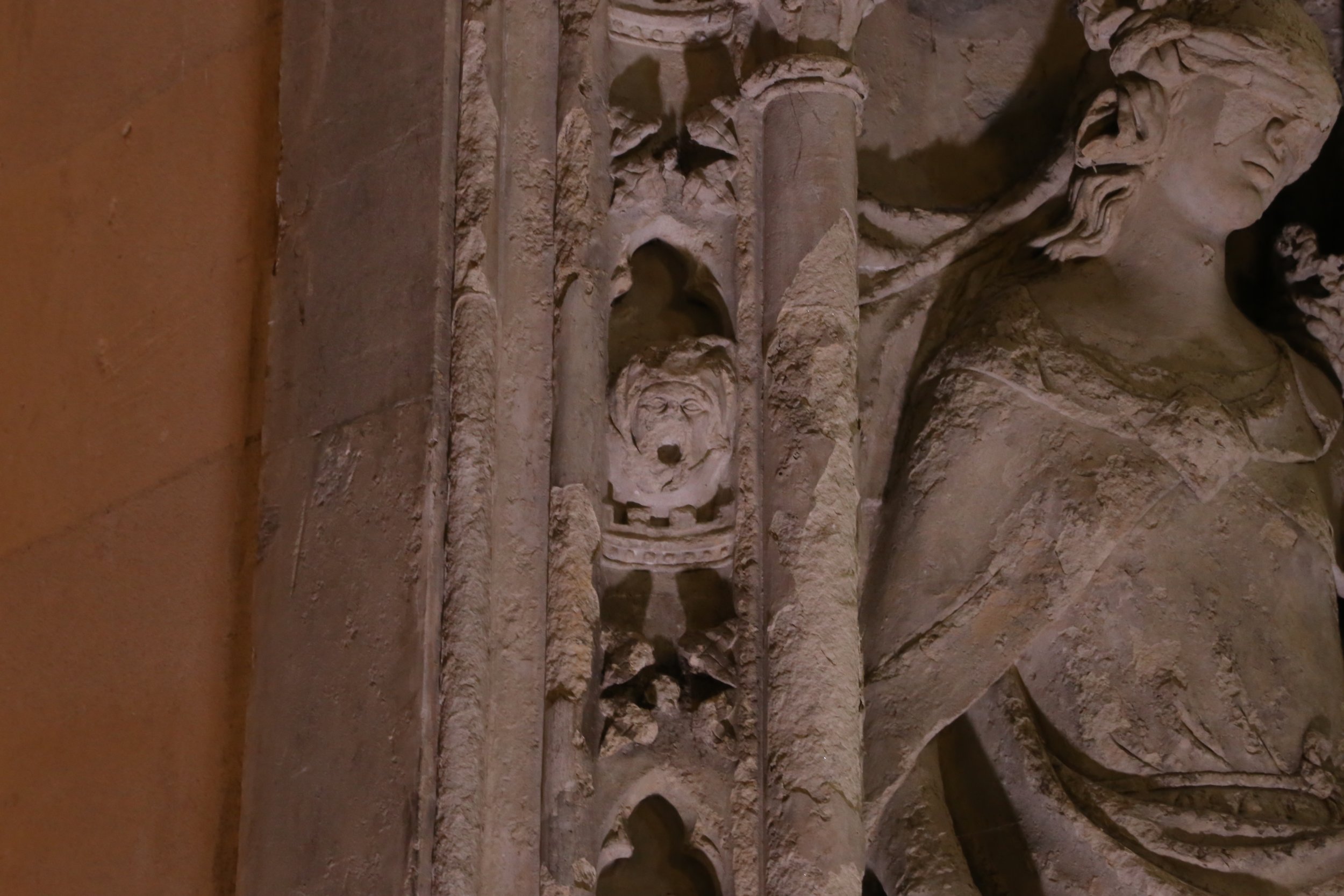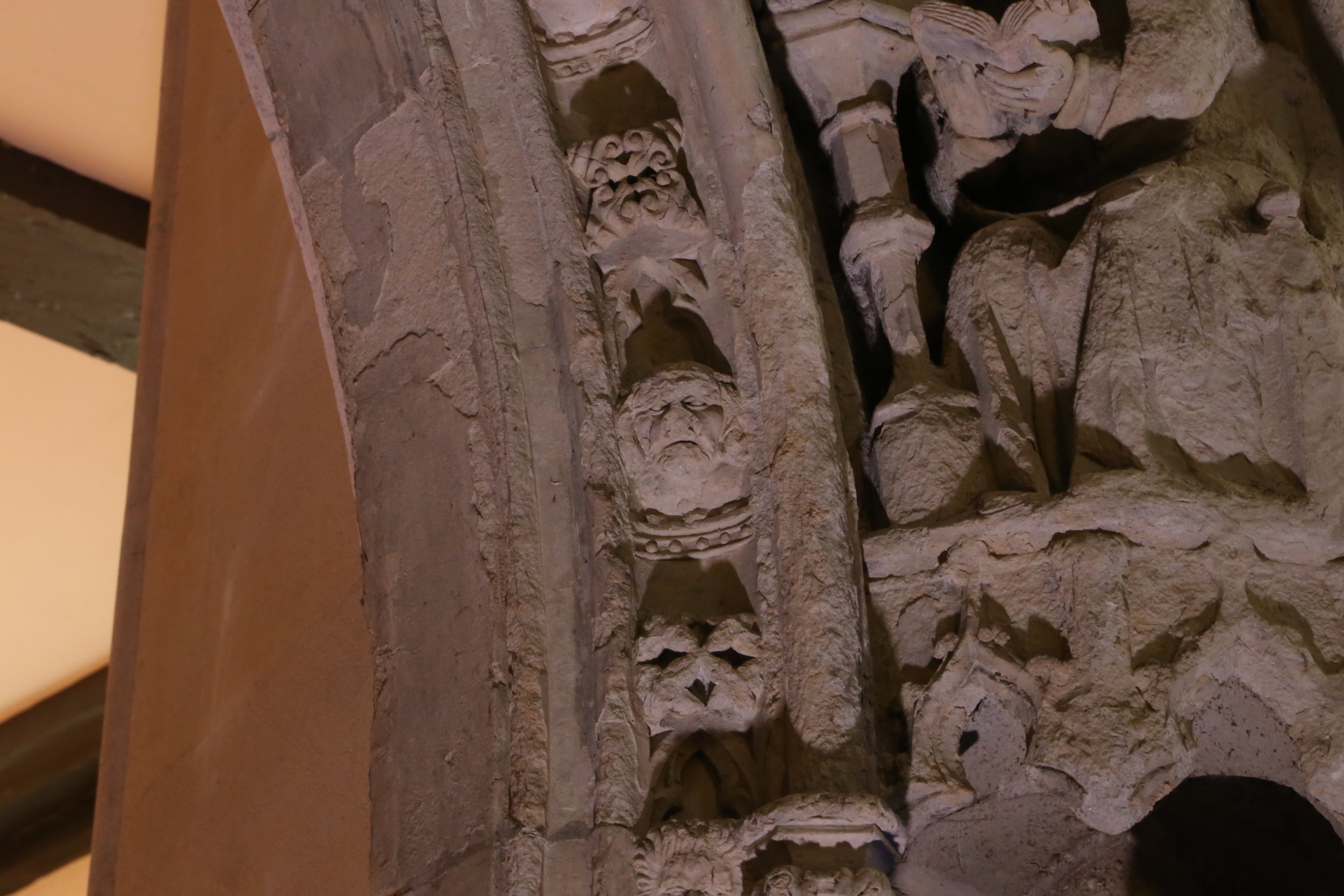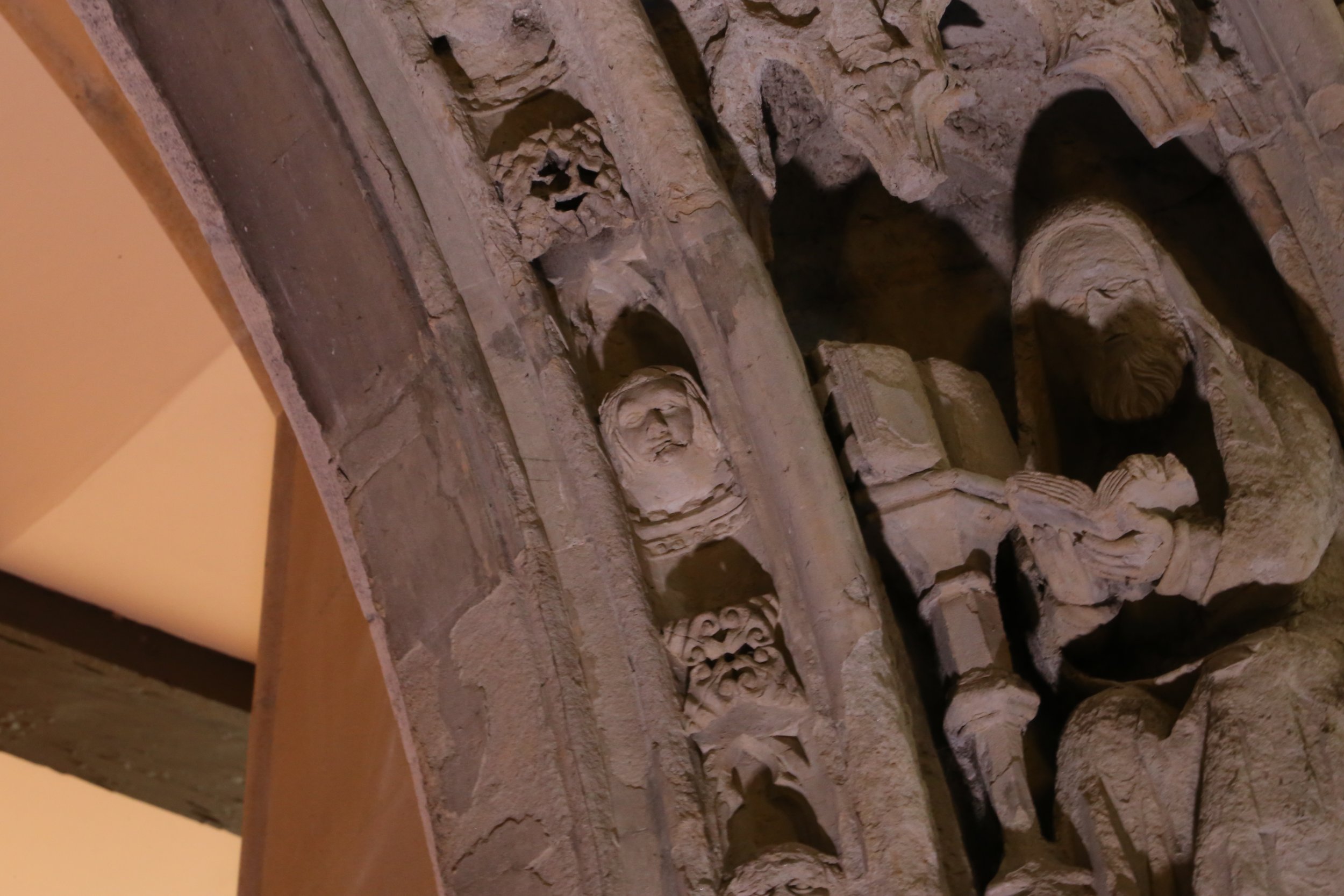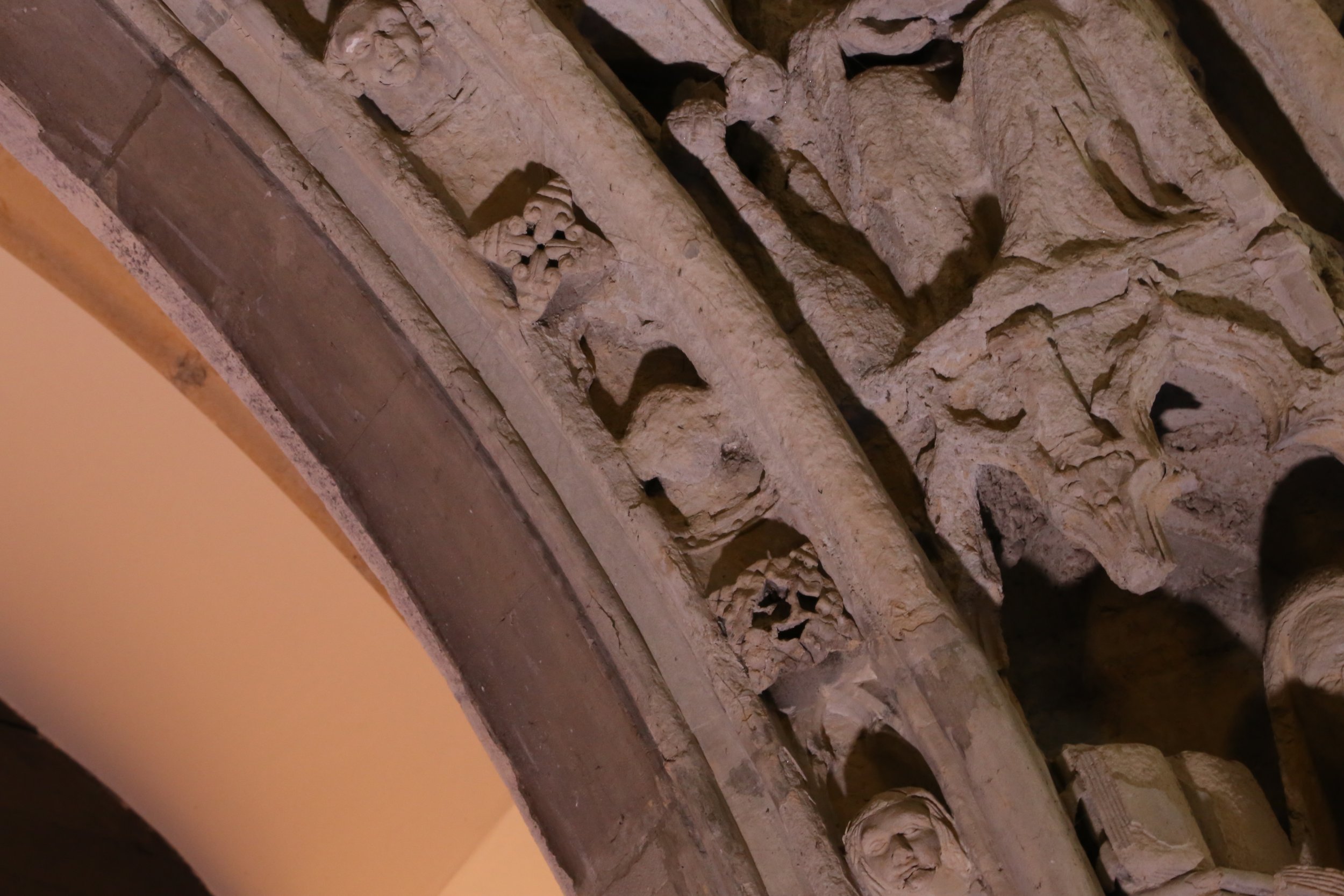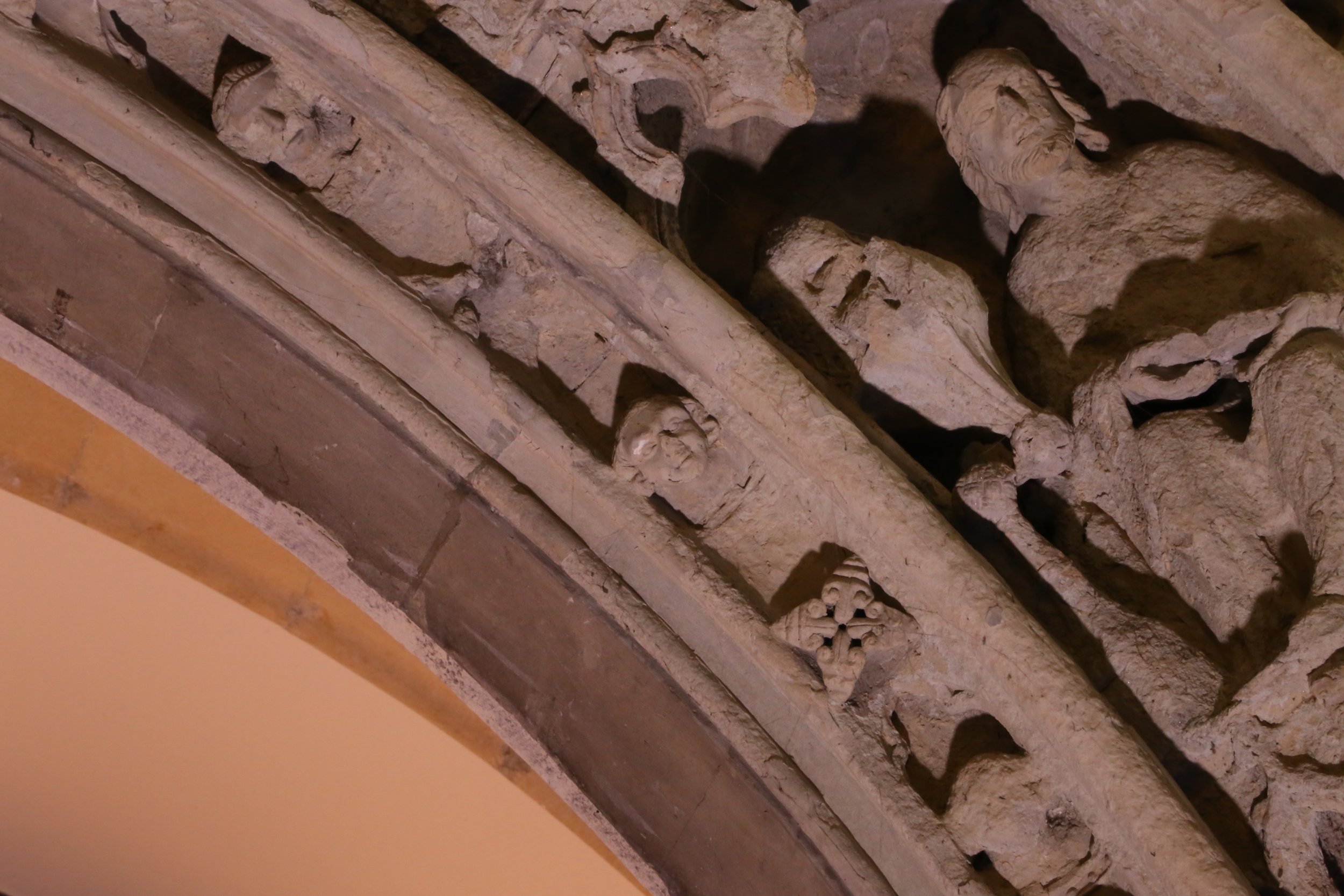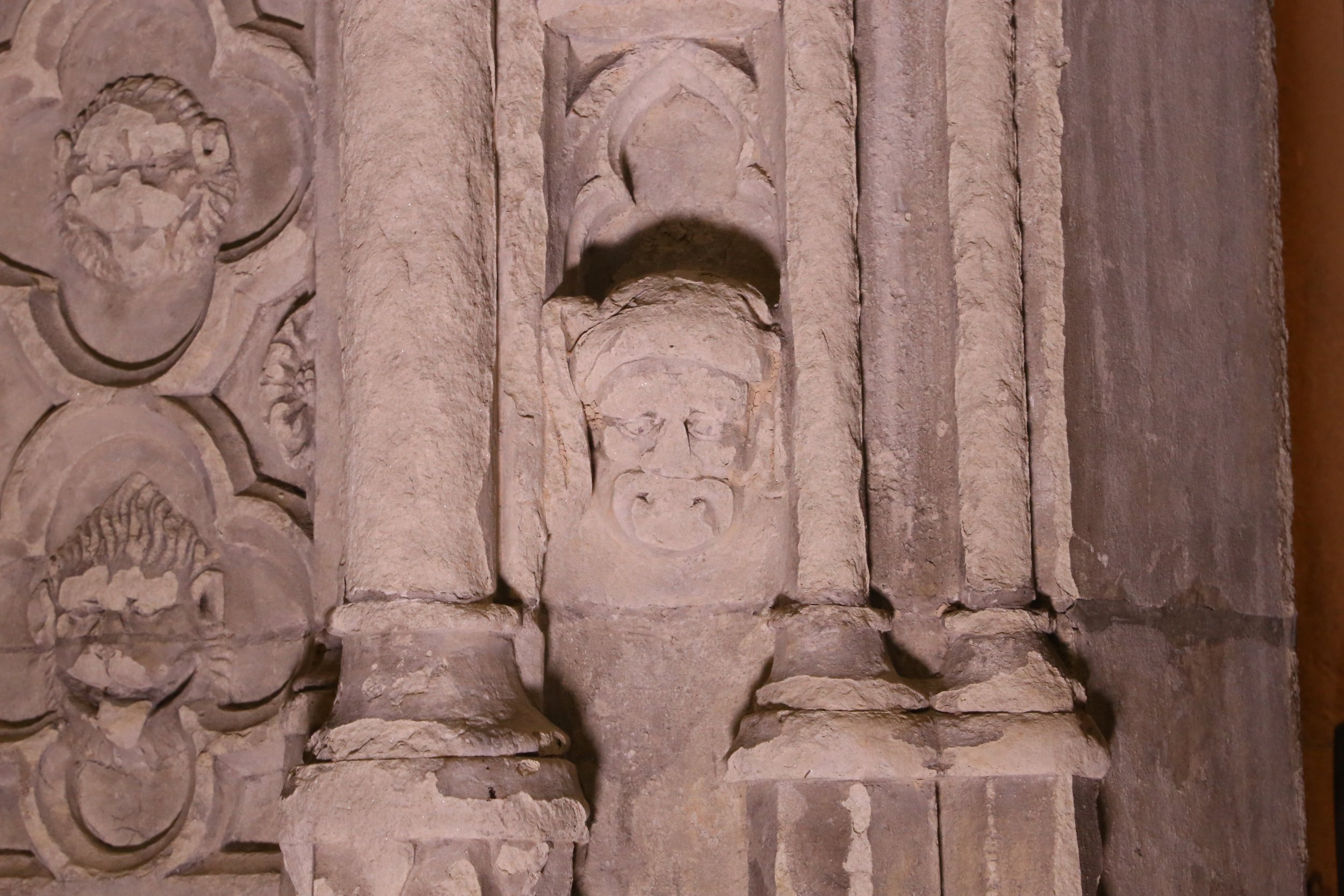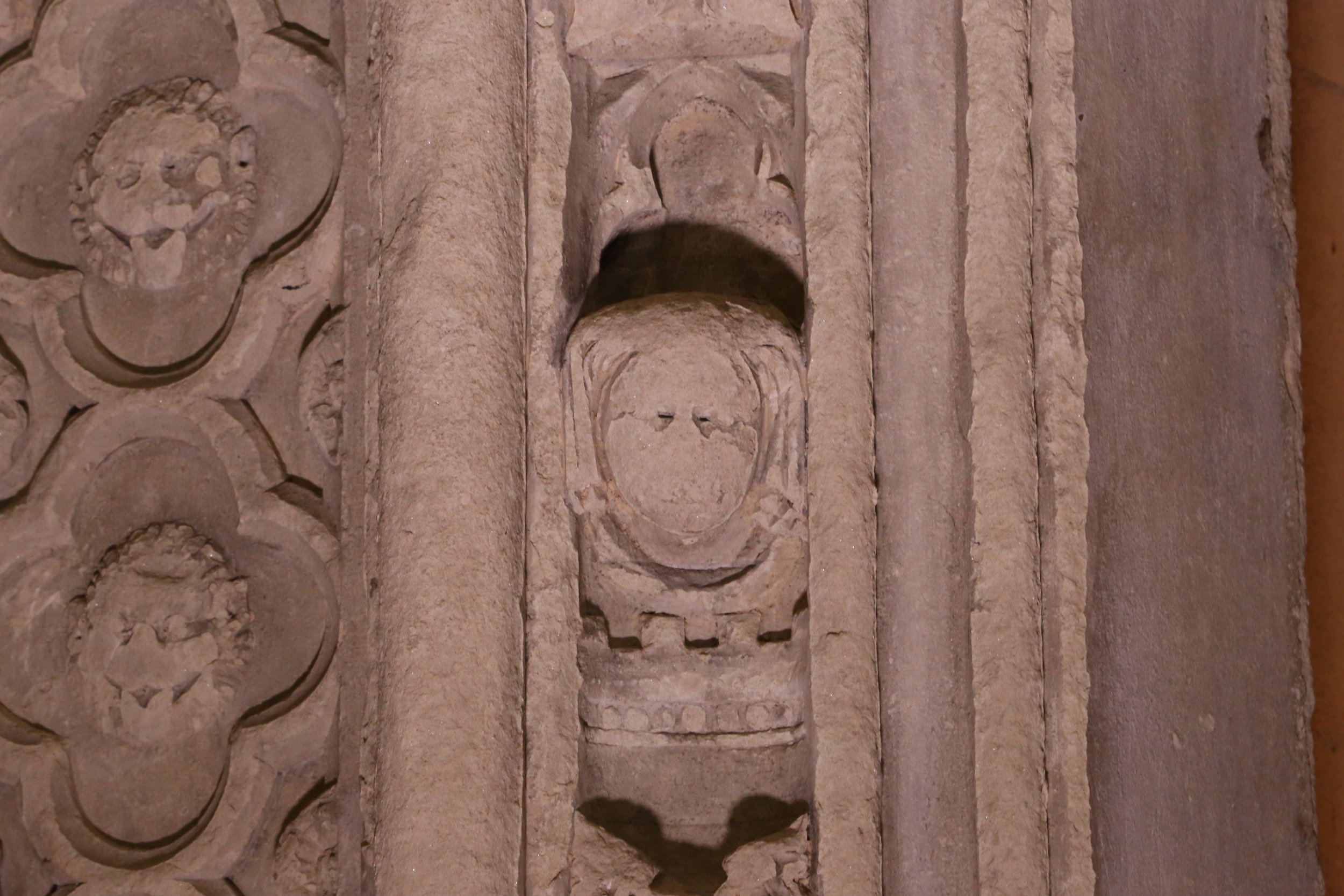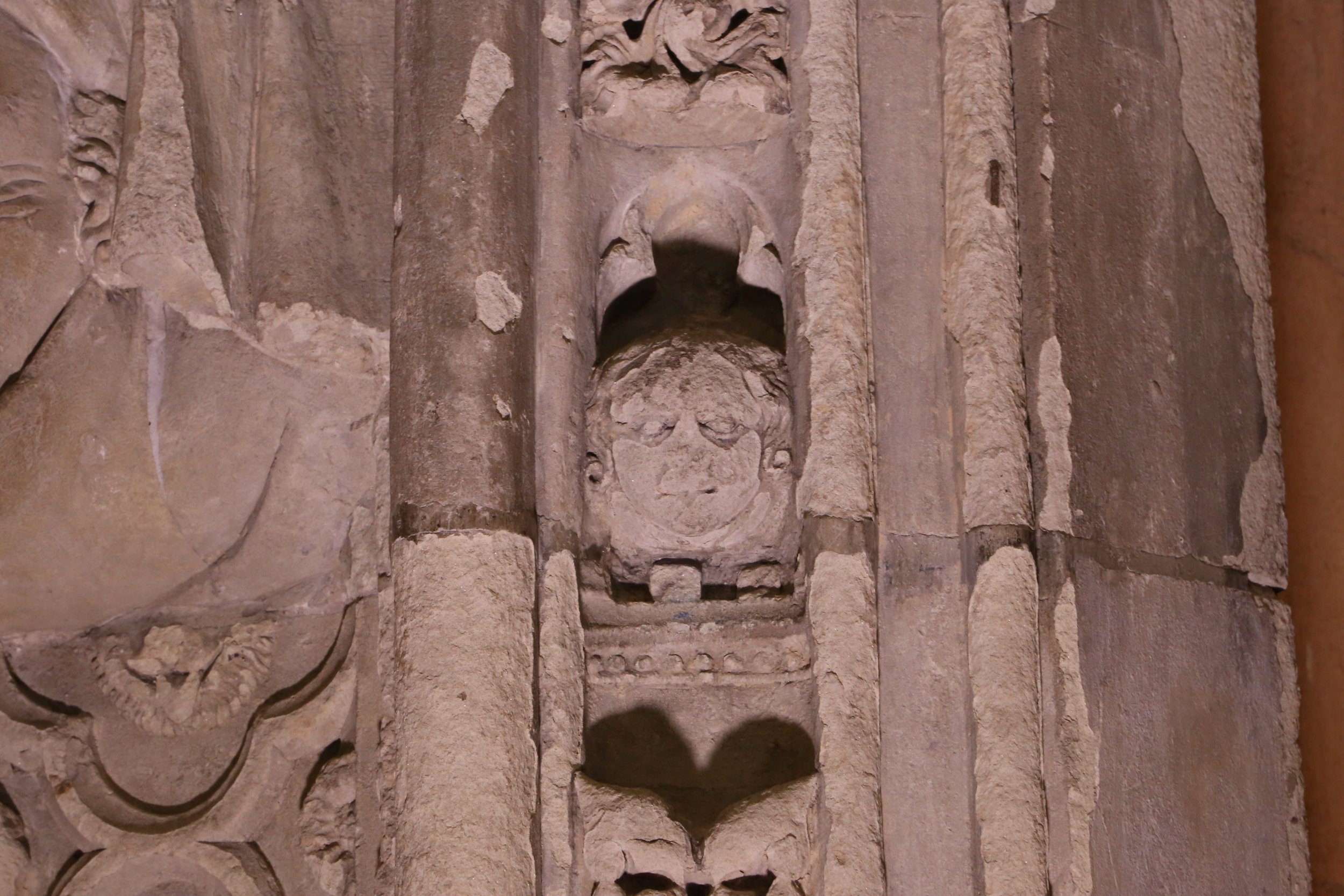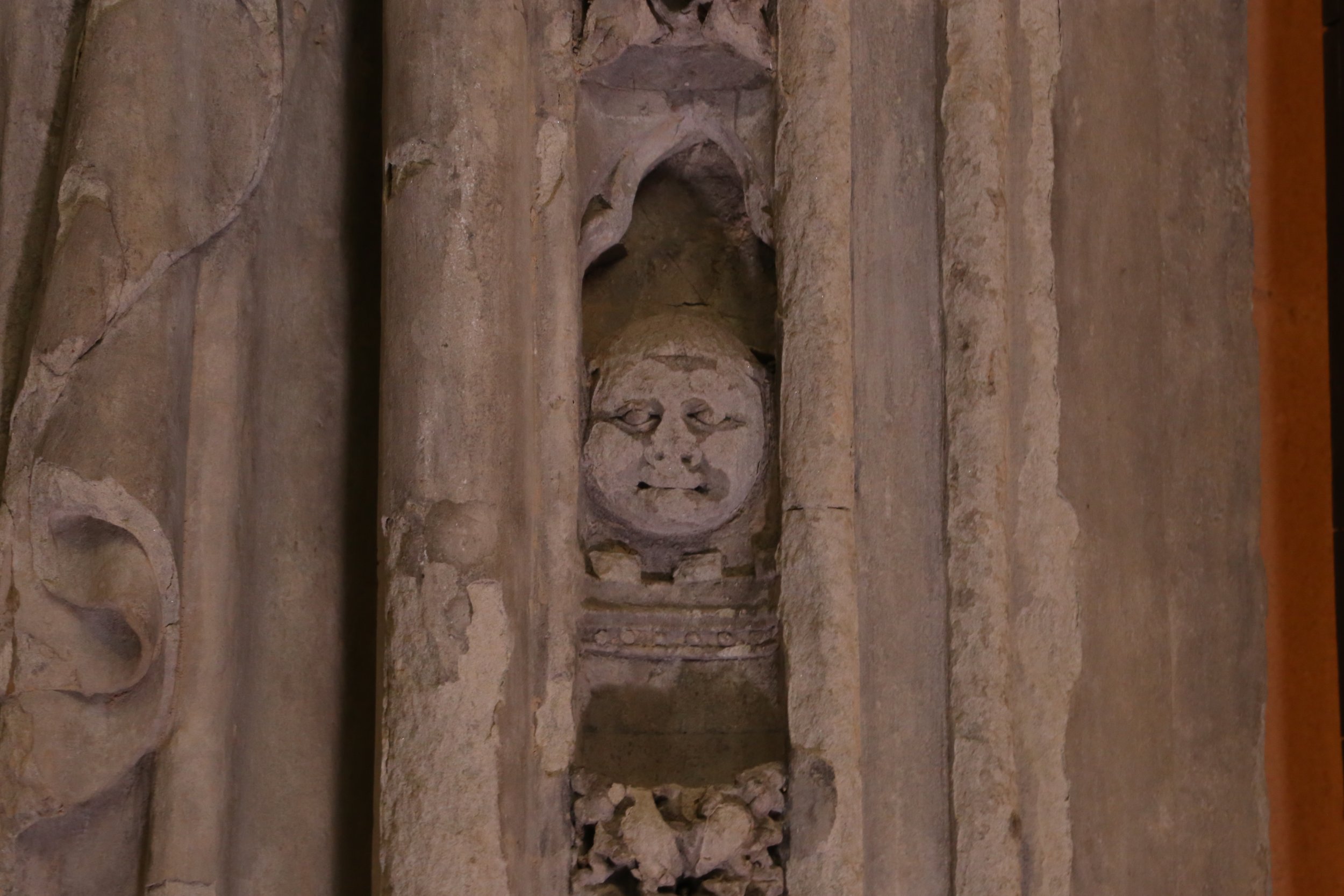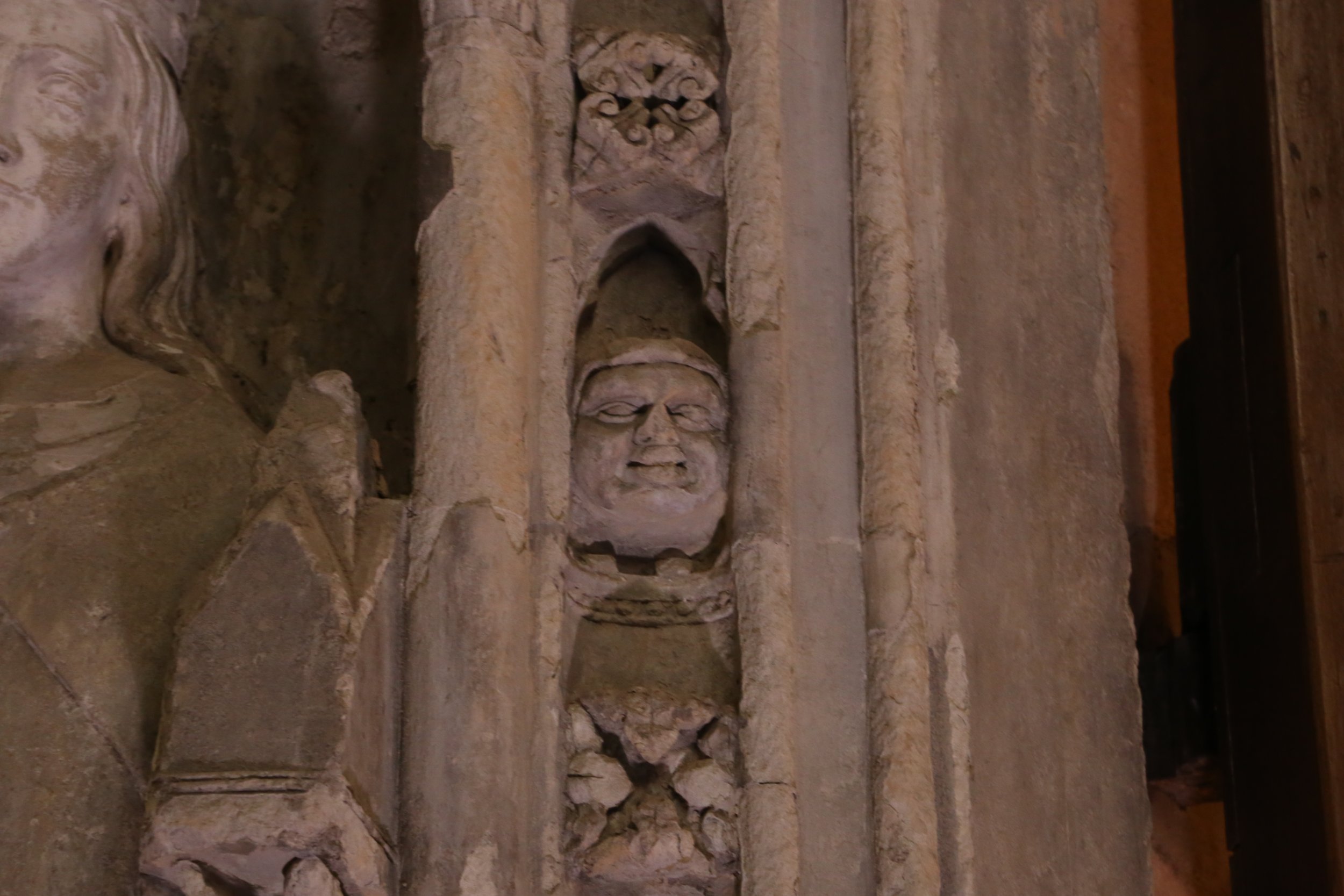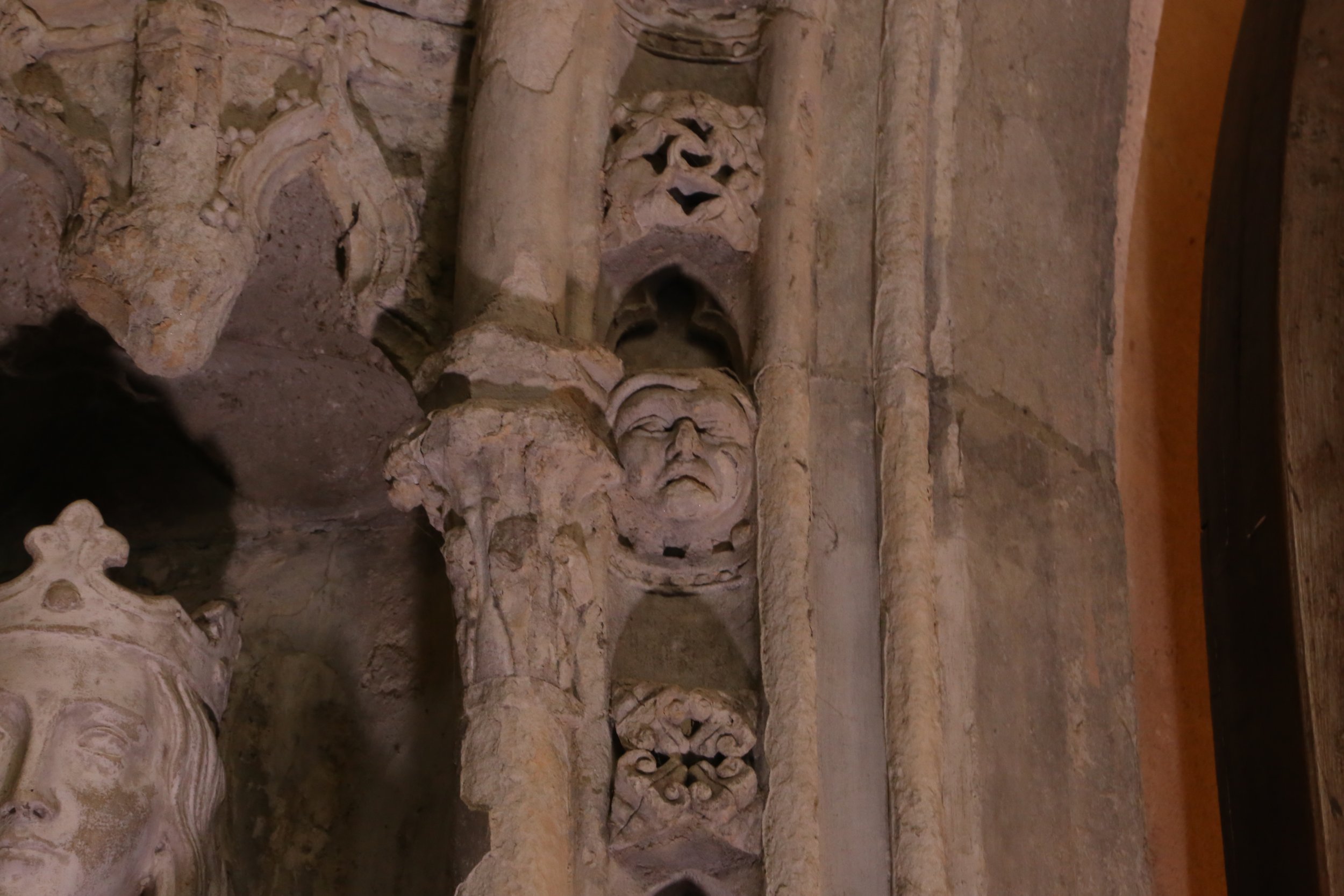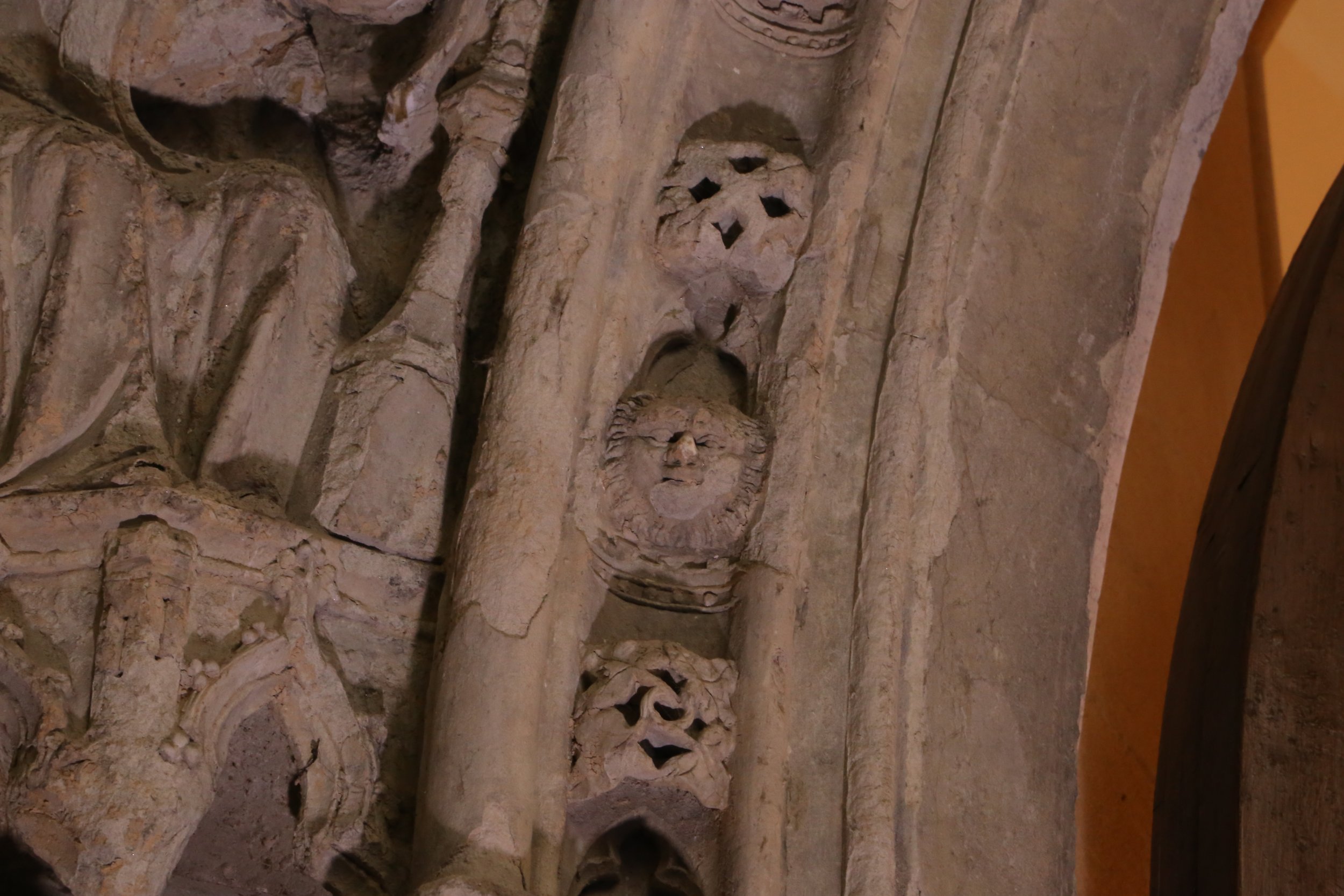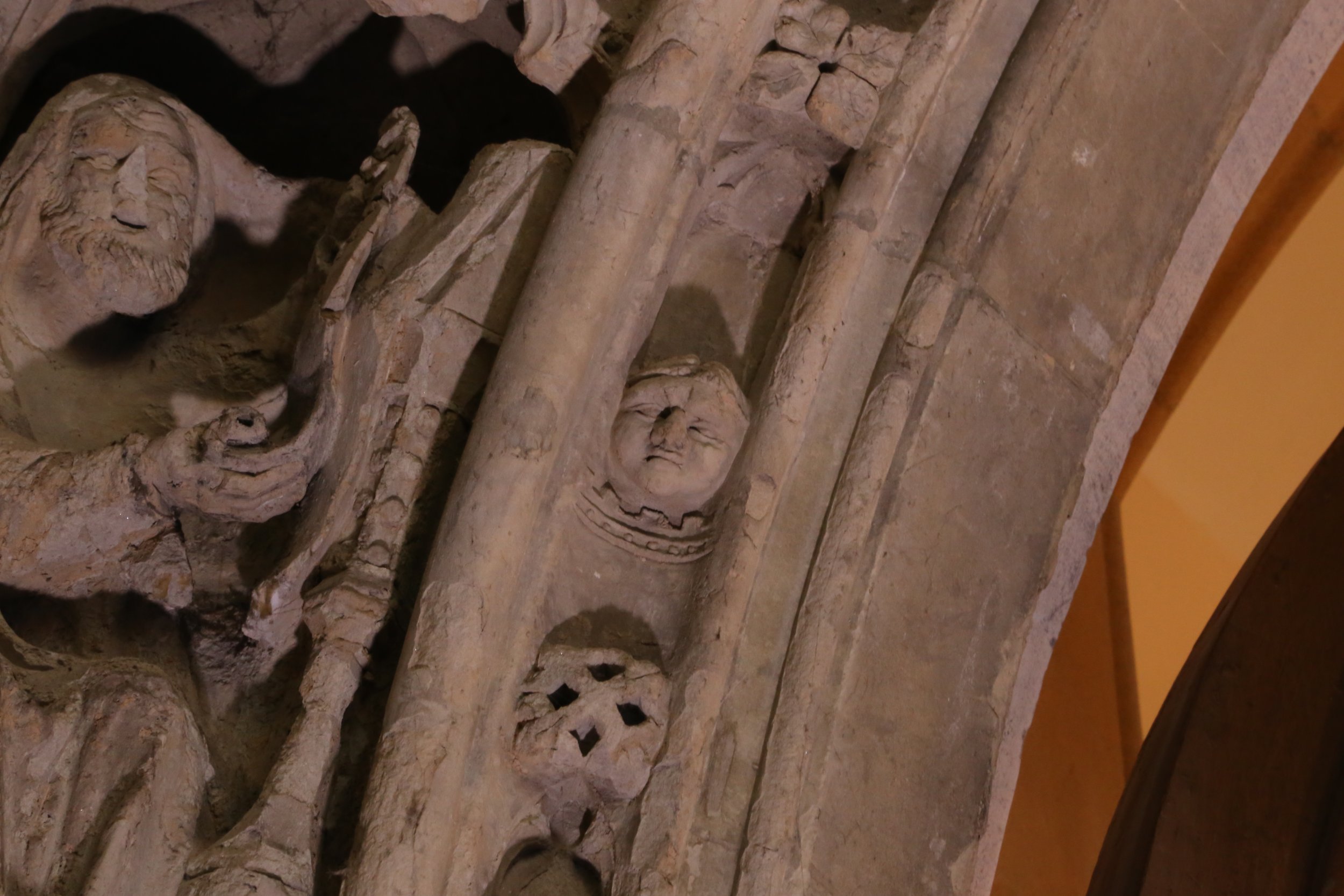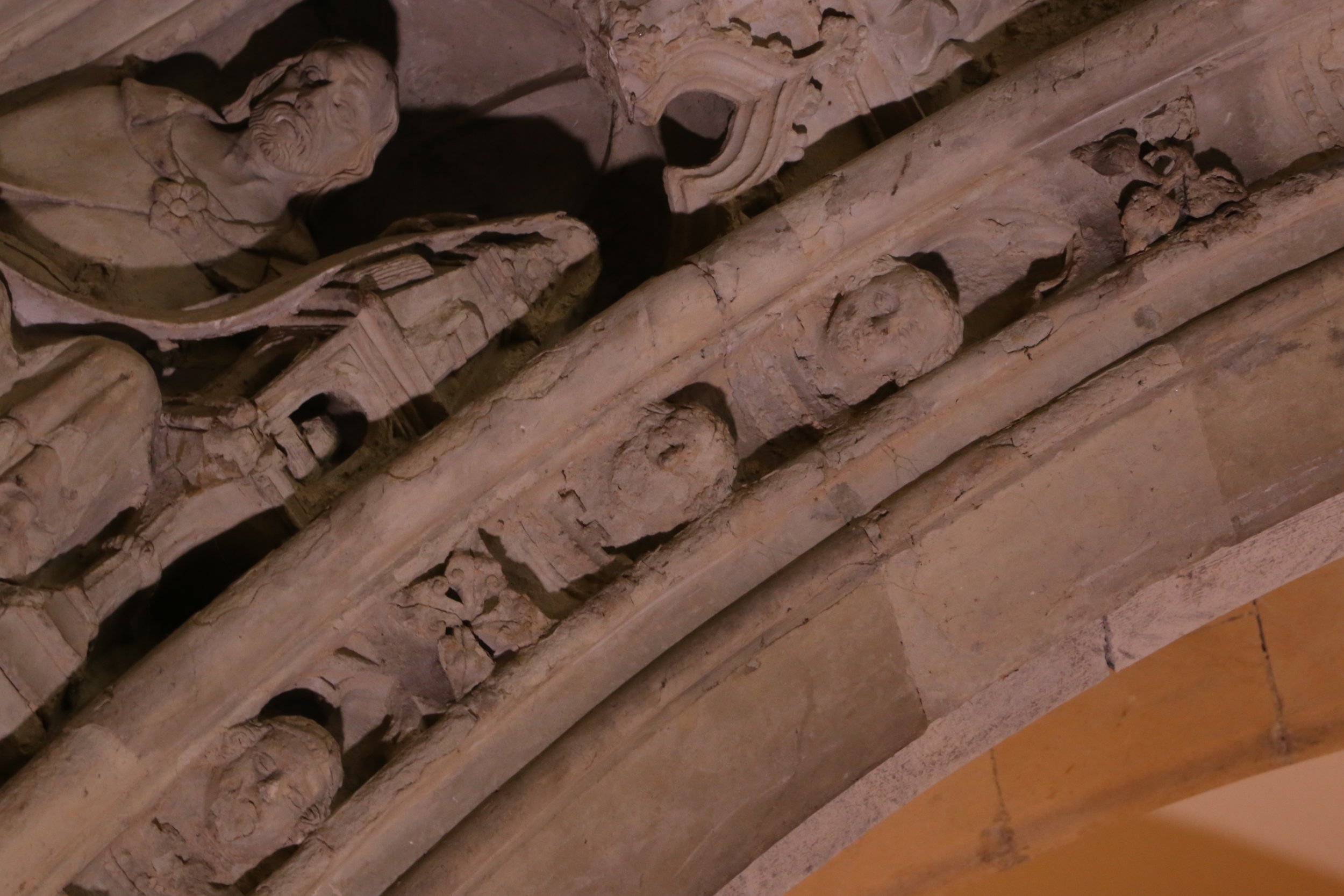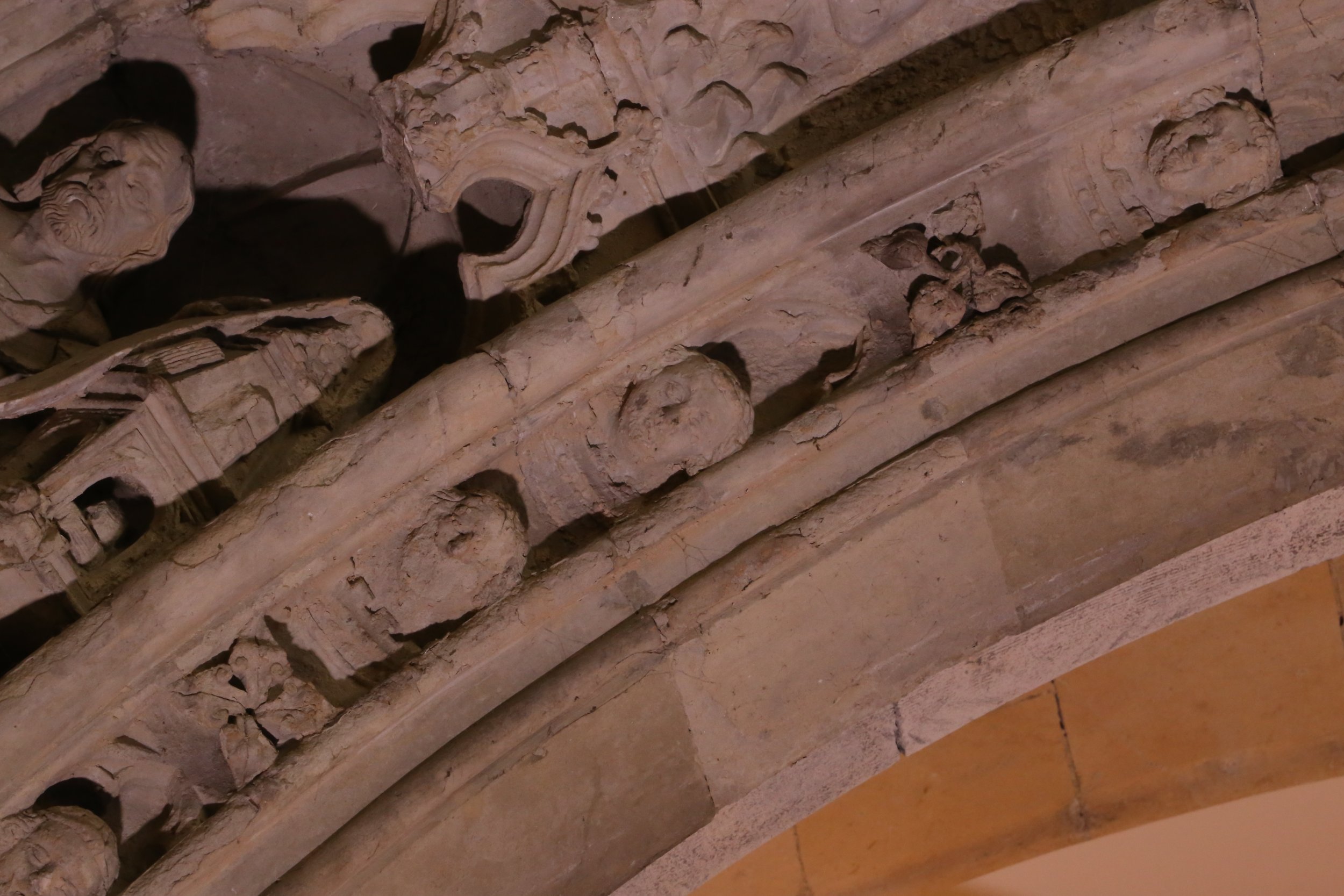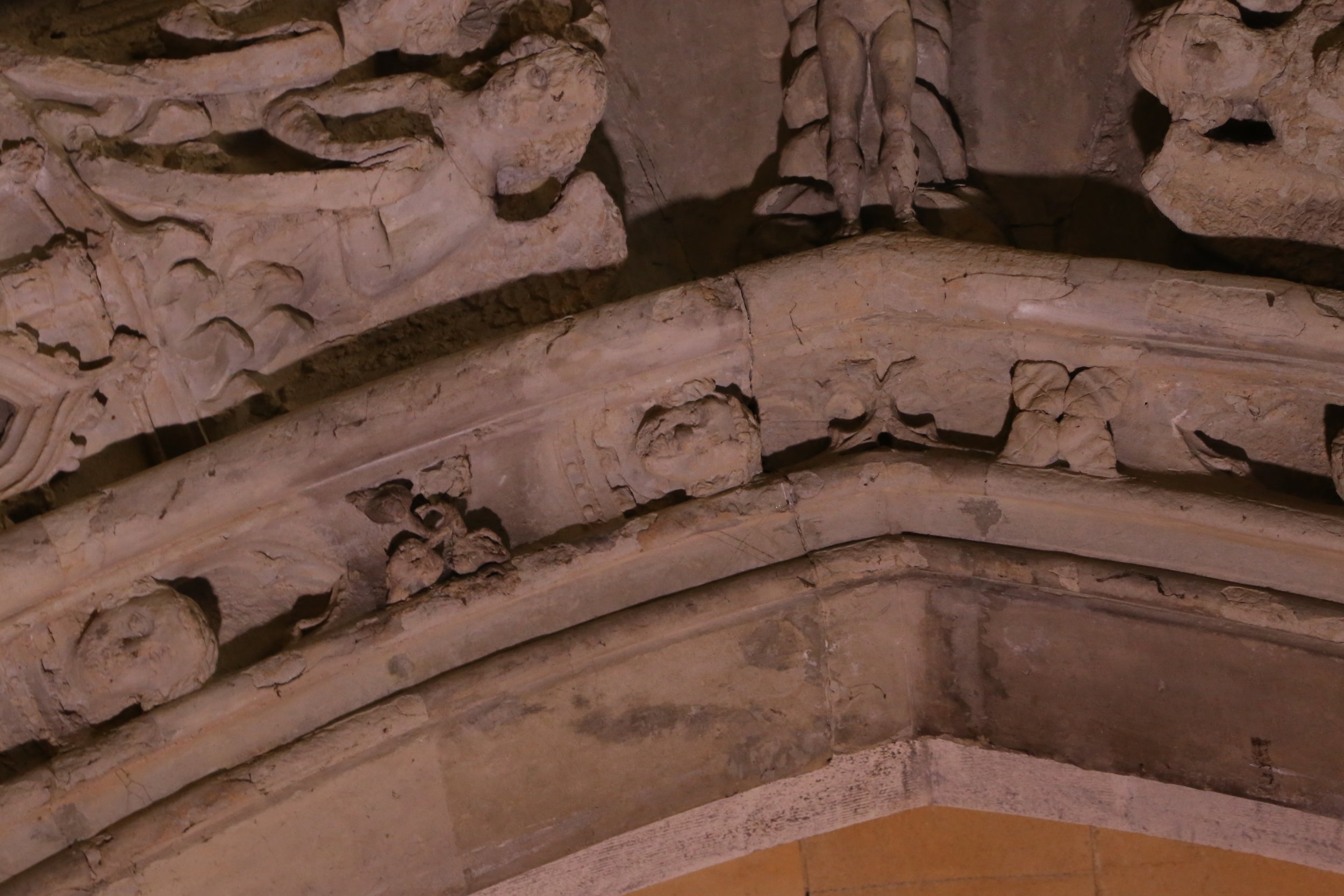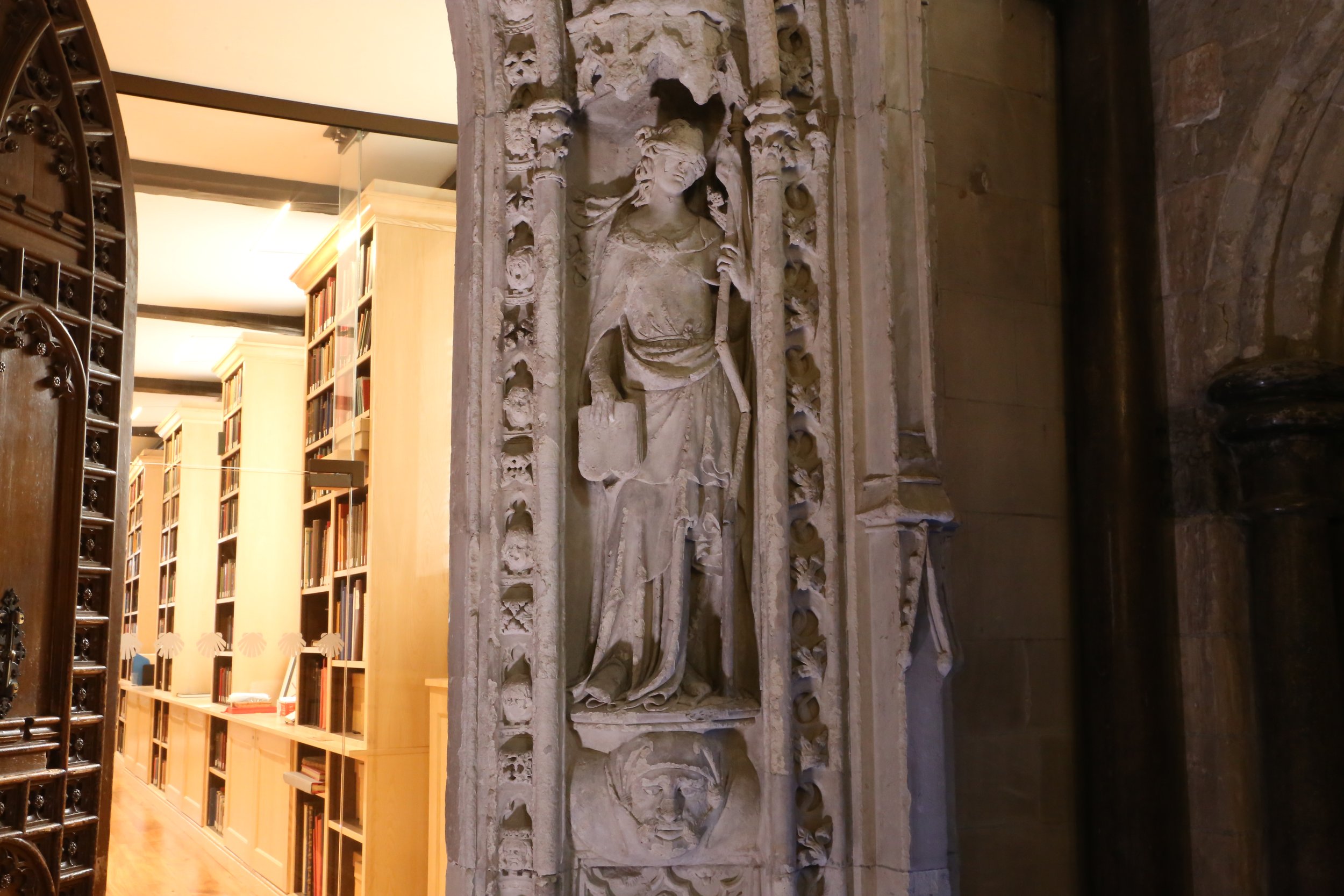Chapter Library Doorway, c. 1340
/An elaborate doorway leading from the South Quire Transept toward the Chapter House (and now the Chapter Library) was commissioned by Bishop Hamo de Hythe circa 1340. Described as one of the finest examples of English Decorated sculpture in existence, its iconography is nonetheless a result of troubled times.
The many elements of the doorway are designed to be read as one entire scene. At the very top, Bishop Hamo himself is depicted as a small naked soul surrounded by clouds and rising to heaven.
Either side of Hamo are pairs of singing angels atop clouds, holding scrolls representing the Word of God.
Continuing down, either side are the four great Doctors of the Church, each sat at writing desks: Saints Augustine, Pope Gregory I, Jerome and Ambrose.
Augustine of Hippo was a late 4th/early 5th century theologian and philosopher, the bishop of Hippo Regius in Numidia, Roman North Africa. His writings influenced the development of Western philosophy and Western Christianity.
Gregory I, or Gregory the Great, was the bishop of Rome from 3 September 590 to his death in 604. He is known for instigating the Gregorian Mission to convert the pagan Anglo-Saxons in England to Christianity. Gregory is also well known for his writings, which were more prolific than those of any of his predecessors as pope.
Saint Ambrose was a late 4th-century Bishop of Milan, theologian and statesman. He expressed himself prominently as a public figure, fiercely promoting the Latin Church against Arianism and paganism.
Jerome of Stridon was a late 4th/early 5th century Christian priest, confessor, theologian, and historian. He is best known for his translation of most of the Bible into Latin (the translation that became known as the Vulgate) and his commentaries on the whole Bible.
The small caricature heads surrounding the doorway from purgatory up to heaven depict monks and kings, poor men and rich. Those nearest the bottom, and to purgatory, are shown suffering and in agony, whilst the figures closer to the top show joy and happiness. Its message is that regardless of wealth or prosperity, all must renounce their mortal sin to enter the kingdom of heaven.
Small heads set within decorated borders are depicted in two panels at the bottom of the doorway. Their mane-like outer proportions are representations of the fire of purgatory. Several scriptural sources allude to a cleansing of imperfection that occurs to souls before they can reach the sanctity of heaven, evoking the literal or metaphorical process by means of fire or burning. Medieval Roman Catholic theology began to incorporate popular culture conceptions of purgatory as a place through which souls would travel only from the twelfth century. By the later Middle Ages, this had evolved into an elaborate iconography. Modern theology mostly emphasises the process of cleansing specified in scriptural sources rather than imaginings of purgatory as a place.
Three small faces of men on the doorway are separate from the others, high up in a separate part of the arch. Given the common practice of including portraits of patrons in medieval artwork, might these be the other sponsors of the doorway, or even portraits of the stonemasons themselves?
Expertly carved vines representing Christ interweave the entire doorway, drawing together the entire ensemble into one scene and emphasising its Christian divinity.
The small pedestals at the top of the doorway would have probably held statuettes. Although evidence of the painted decoration is almost entirely absent, there can be little doubt that the doorway was intended to be painted. Taking cues from the figurative sculpture reveals a varied figural ensemble within flowing green acanthus and vine leaves.
The two largest figures in the scene are emerging from the heads of men. These are Ecclesia and Synagoga representing the Christian Church and Jewish synagogue (i.e. Judaism). Ecclesia on the left stands proud with crown and crucifix staff holding a representation of the Church.
Standing opposite and in contrast, Synagoga is blindfold, staff broken and the tablets of the law held upside down. This reflects the belief, universal in the medieval Church, that Jesus was the Jewish Messiah and that Judaism as a religion was superseded by Christianity. This starkly anti-Semitic iconography is common in medieval Church art. It has been noted that here Synagoga has been sympathetically treated, compared to more grotesque charicatures from around the time, some 50 years after the Jews expulsion from England in 1290. However, in placing the beautiful but tragic Synagoga within the wider scene, it could be said to go further in rationalising its anti-Semitism within the divine order.
In some respects this remarkable exemplar of the teachings of the Church in the mid-fourteenth century is not so outdated, in that a fault line underlies conceptions of Judaism within Christian theology today. Dual-covenant theology, the school of thought incorporating the idea of separate covenants with God for the Jewish people in the form of the Old Testament, and for Christians in the form of the New Testament, is generally in the minority. The Anglican Communion specifies only that Christians are bound by the moral commandments of the Old Testmanet, but not by the ceremonial, ritual, or civil laws.








